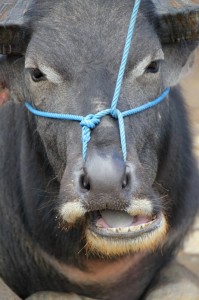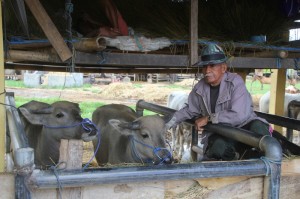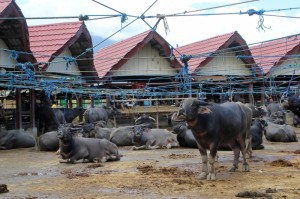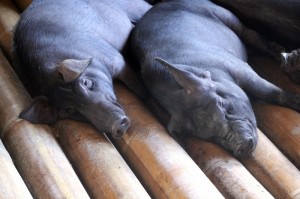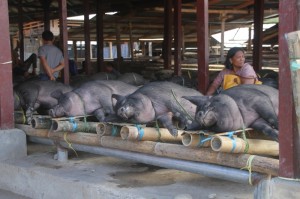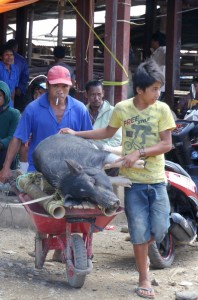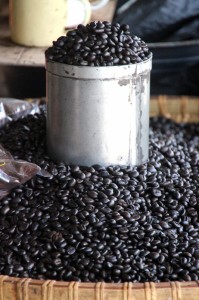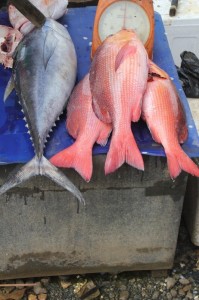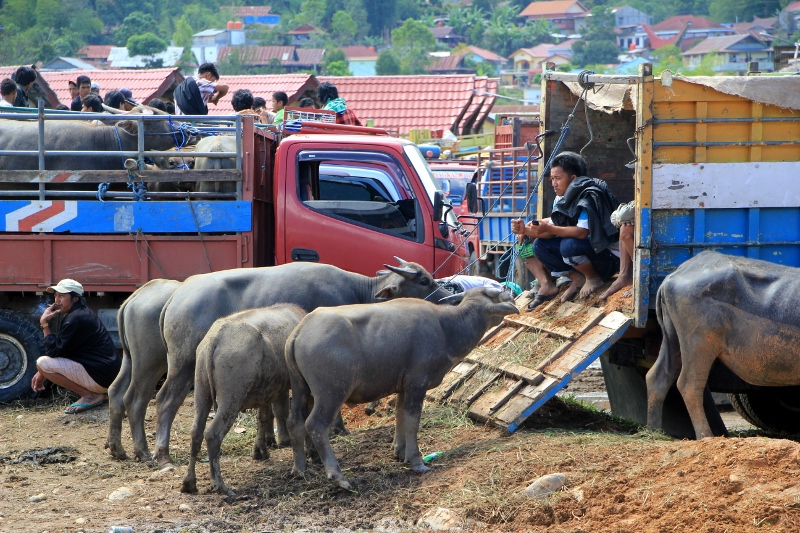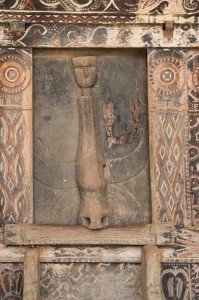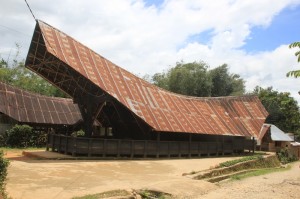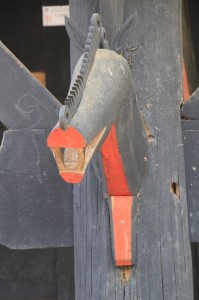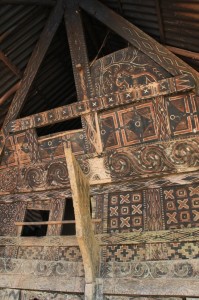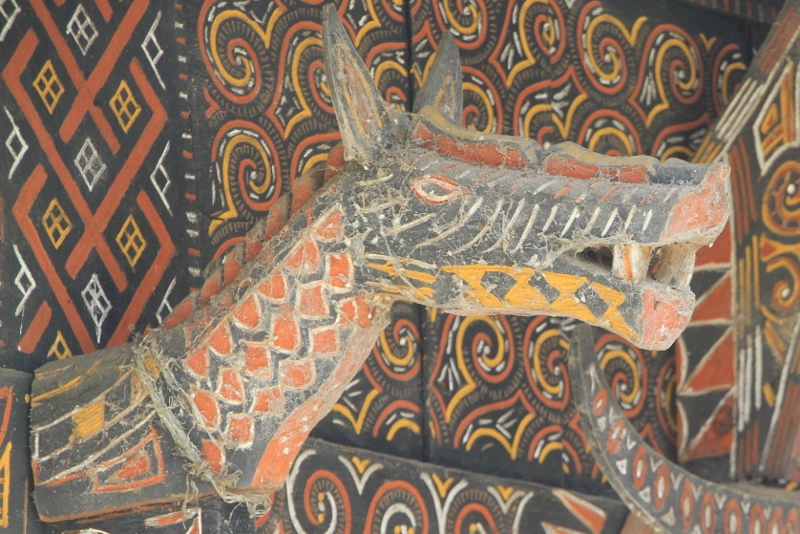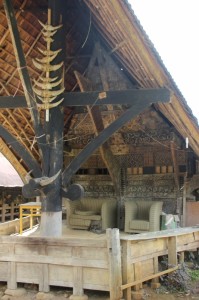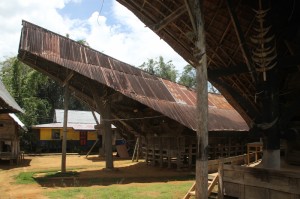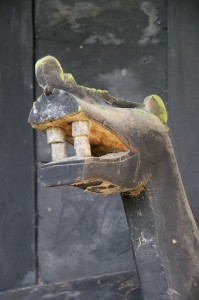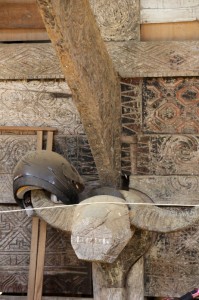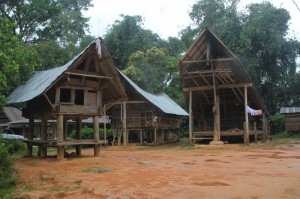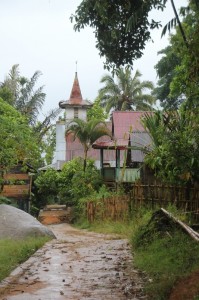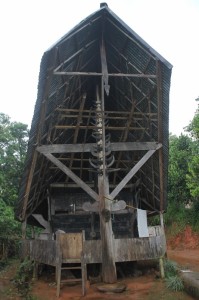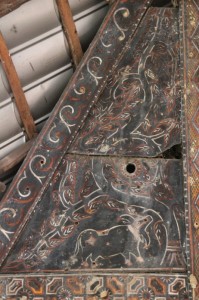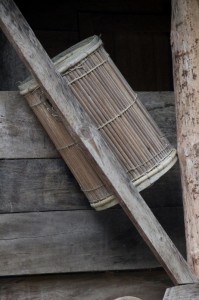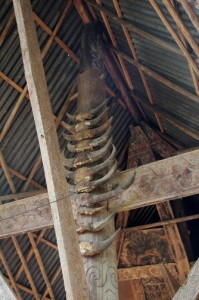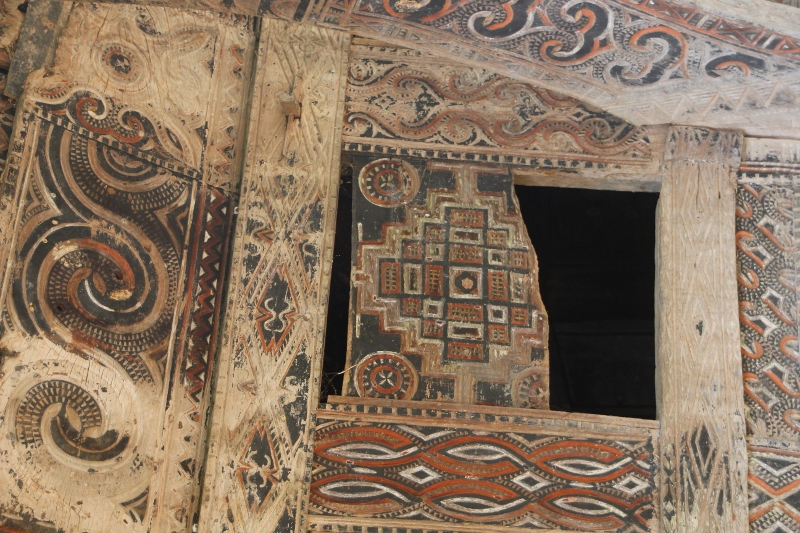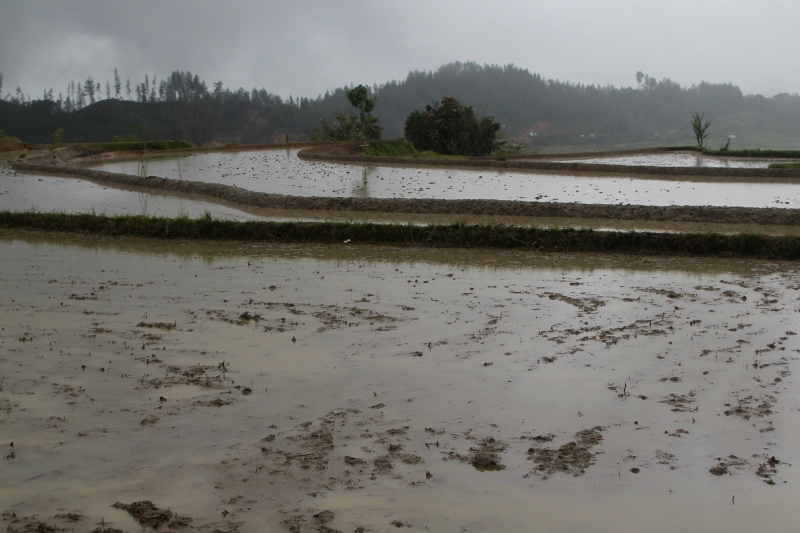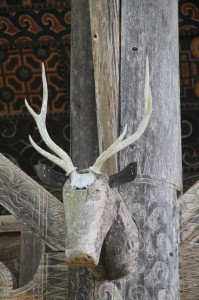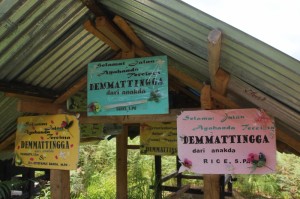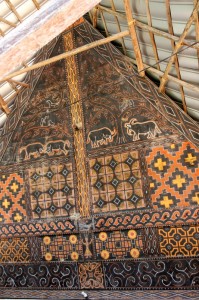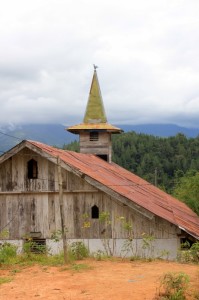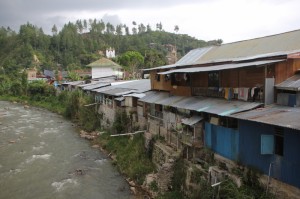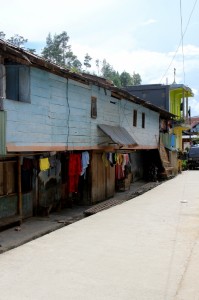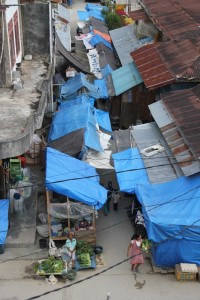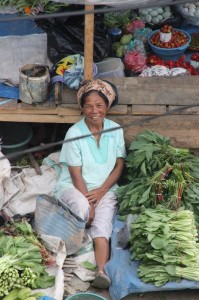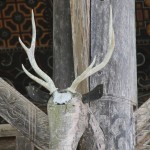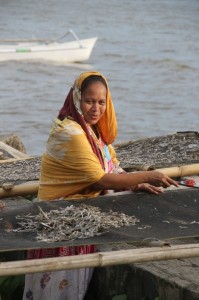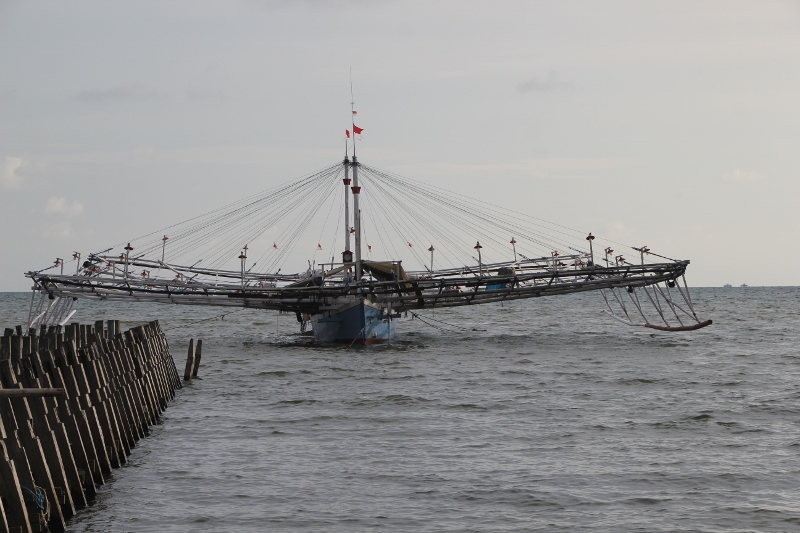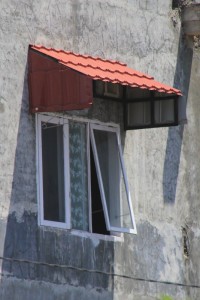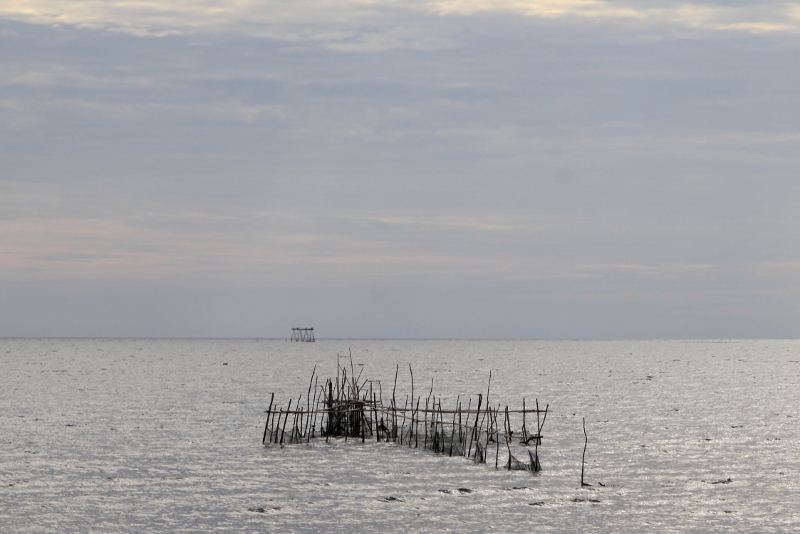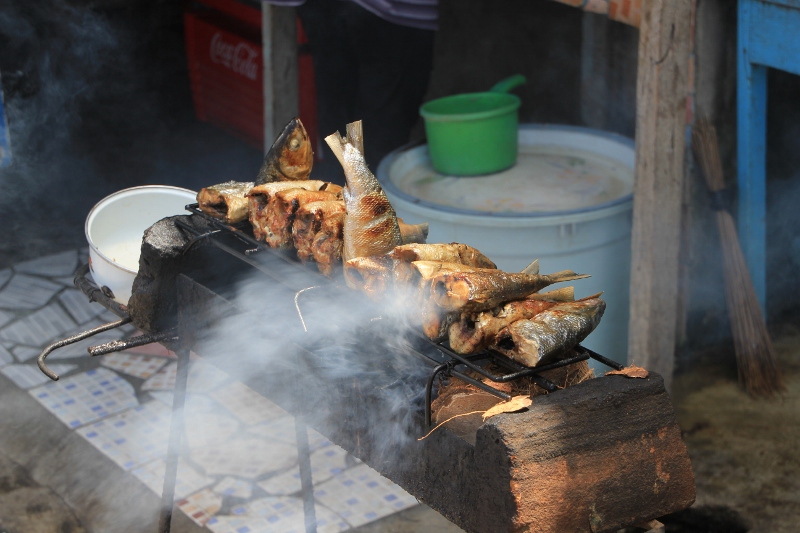Unique market in Rantepao, dominated by buffaloes and pigs for sale.
The market at Bolu, at the northern edge of Rantepao, is like any other market. Except that they also sell buffaloes, hundreds of them, in three large enclosures packed with animals – and with their daily production! Open shoes or slippers is perhaps not the best option, wandering the market. And wandering the market is what you want to do. On the sides, young buffalos are kept, tied to metal racks. In the middle of the enclosures the bigger animals are being shown, either lying down on the tiles, or in their own daily production, others tied by rope to a structure overhead – to make sure they don’t lie down? I don’t know.
Next to the buffaloes, there is also a lively market for pigs, kept in bamboo cots after bamboo cots. That is to say, the market in lively, the pigs aren’t. And especially after they have been sold, as they will then be prepared for transport, not a pretty picture. The bigger ones are tied down with rope on a bamboo platform, one after the other, ready for take away. Most buyers will come with a wheelbarrow, to bring the pig to their waiting trucks; others toe the pig to a carrying pole which goes on the shoulders. Either way, this cannot be comfortable for the poor pigs.
Any animal market creates side business, one of the most active ones being the rope sellers. As a spin off, they also sell bamboo footballs, very popular with the youths.
The rather grey colours of the animal market, which is being held every six days, are somewhat compensated by the colours of the regular, daily market. The usual vegetables, but also coffee and fish. The problem with markets is, that I get over-enthusiastic taking pictures.
From here, it is a short walk to Bolu village.
